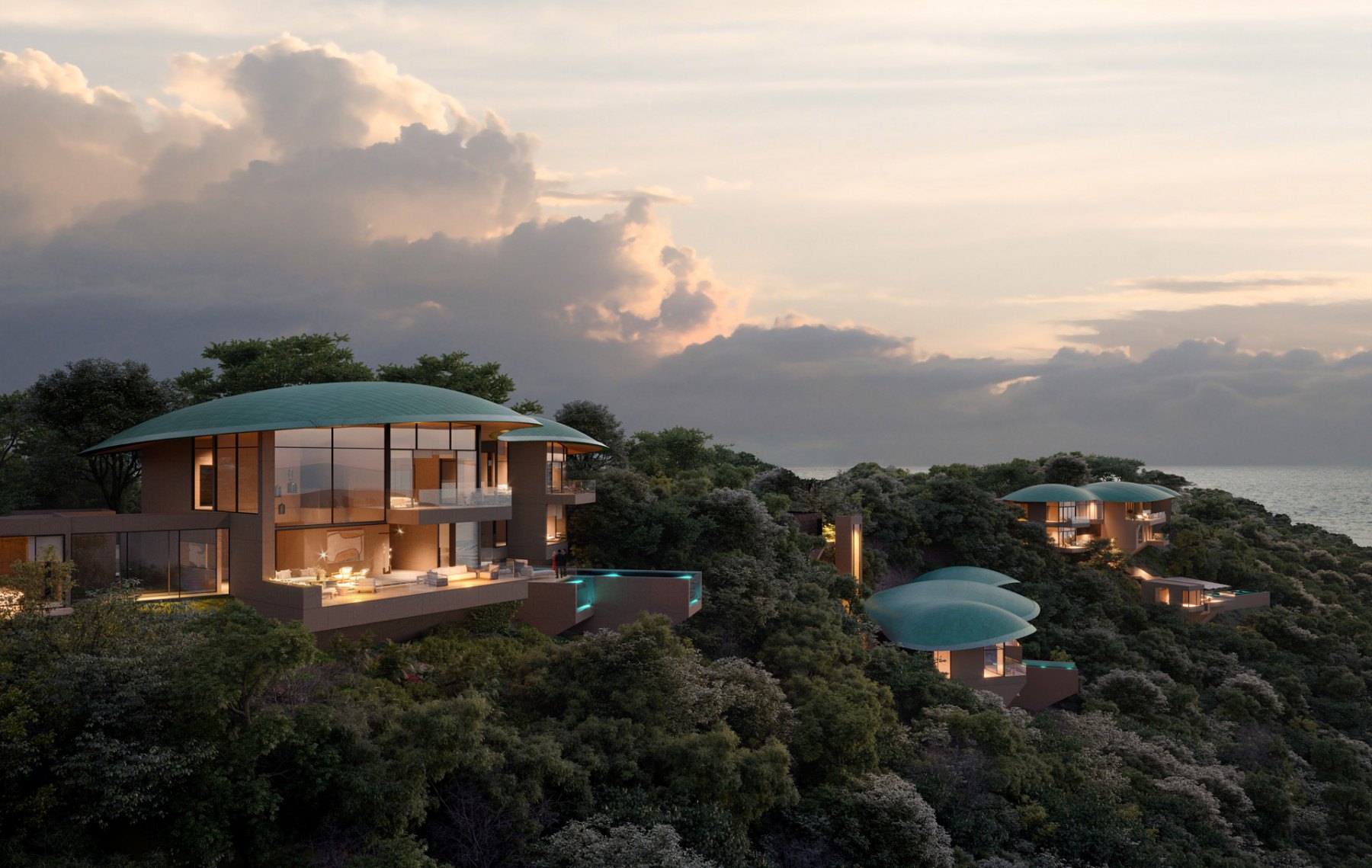Andrei Dolnikov is the Founder & CEO of award-winning Architectural 3D Rendering and Film Production Studio BINYAN. He leads a team of 100+ artists, producers and filmmakers to create photo-realistic imagery and films to help market the unbuilt visions of architects and designers.
We all remember being in architecture or design school and experiencing the wonder of working on diverse aspects of the architectural process and the joy of looking at a task holistically and allowing our imaginations to seek creative solutions to the opportunities before us. Once in the field, however, it is common for young architects or interior designers to feel as though they have been pigeonholed into certain tasks — an experience that makes young minds feel like cogs in a machine, unable to creatively contribute to the overall design process. For those who choose to follow their passion for architecture and design into the world of architectural visualization, day-to-day life looks very different.

Los Bahias by Antoine Predock, Costa Rica. Image courtesy of Binyan ©
A visualizer may begin their morning by playing the role of the architect — often in collaboration with a world-renowned firm like BIG or Zaha Hadid — in order to model a tower or add finesse to details of an interior space. Next, it may be time to switch gears and to take on the role of interior designer. Fabric, materials, accessories and furniture items will be selected from the latest digital libraries of classic and avant-garde design pieces. With input from collaborators, including standout interior designers such as Kelly Wearstler, the visualizer mixes and matches to make sure the pieces work together as an ensemble.
In the afternoon, the hat of the landscape architect may be donned to study the species suitable to various schemes — perhaps designed by Paul Bangay and other notable figures — in order to populate a scene with natural and intentionally designed plants and vegetation.
As evening falls, a visualizer may tap into their skills as an architectural photographer. Drawing inspiration from the world of design and graphic arts to create the perfect composition, the visualizer will showcase their knowledge of the principles of balance, focus and visual hierarchy. They (virtually) rely on the perfect sunset to light their scenes, adding elements of narrative, such as people, entourage and imperfections that evoke intrigue and nostalgia in viewers.
Finally, before heading home for the day, someone working in architectural visualization may turn their attention to motion and experience design. After using film-making skills to draw up a storyboard, the visualizer may visit the filming site to supervise a green screen shoot and VFX, in addition to generating a concept for a projection mapped experience in order to activate a sales gallery.
While working as a visualizer may, at first glance, seem limiting, for many who choose this path, the experience is precisely the opposite: it is emancipating and up-lifting. As outlined above, the various design activities in a 3D artist’s day-to-day are all controlled by the visualizer alone. Even though the design of the building comes from the architect, the design of the image in all its facets is fully controlled by the 3D artist.
“I get to work on the fun, artistic aspects of the project without needing to be concerned with the more practical and mundane components,” says BINYAN New York Creative Director Miranda Romer, who is responsible for designing and strategizing for multiple content types to come together in a successful campaign. “I think we are having all the fun! Not to mention we work with the who’s who of architecture which is a real thrill.”
Another drawcard of a career in architectural visualization is the exposure to- and experience with- the latest in technologically progressive visualization software. This is where the world of design meets the world of Hollywood and VFX. Architectural visualization firms utilize software developed for the world of CGI animation, and gaming to create lifelike images, animated short films and interactive experiences that their clients commission. Working in software such as Unreal (as seen in the Mandalorian Star Wars series), 3d Max, Fusion, Houdini & Resolve an artist also learns to code, write custom scripts and become adapted to the future requirements of a career in the field of design.
Working side by side with people from a range of backgrounds far beyond architecture such as industrial design, gaming, animation, filmmaking and IT development creates a learning melting pot in which the various disciplines inform one another, and it is not uncommon for people with architectural backgrounds to discover a new passion for one of these adjacent industries.
Understandably, career choice is often influenced by the financial potential of a given industry and many are surprised to learn that an entry level position within an architectural visualization firm pays up to 20% higher than a comparable job in an architecture or interior design company. Why is this the case?
Part of it is simply the laws of supply and demand. The architectural visualization industry has matured and grown in leaps and bounds over the past 20 years, developing from a hobbyist industry — where visualizers were essentially adjuncts to architectural practices— into a global, recognized field. Renowned 3D visualization firms in New York, London, Australia, South America and Europe are now the same size as established architecture firms, employing from 10 to 100+ staff and working on some of the most significant, high profile projects round the globe.

Chelsea Barracks by Albion Nord, London, UK. Image courtesy of Binyan ©
Yet, as a recent review of educational institutions shows, there are but a tiny handful of universities where the skills of contemporary architectural visualization are taught. With so few opportunities to acquire the necessary skillset, the demand on those who possess them is high, with firms recruiting from all over the world to find artists with both the creative and technical abilities and skills to succeed.
Even still, simply looking at a career in architectural visualization through the lens of supply and demand would be an oversimplification. The key drawcard of being part of architectural visualization is that the definition of the industry and its future potential is a constantly evolving story — one that is being told by those lucky enough to have gotten their start early on and those who are ready to join now. Every arch viz company can tell you stories of people who started off as juniors and, at a young age, have progressed rapidly to achieve ground-breaking milestones in the industry and in their careers.

Beyond Fridcorp by DKO + Fridcorp, Sydney, Australia. Image courtesy of Binyan ©
In architectural visualization, we talk about living in “dog-years” where a three-year learning curve can catapult a junior modeller like David Butterworth, who is from rural Australia, to become a creative director in New York City within four years of his career at BINYAN. This story is one of many. Architectural visualization is a land of opportunity for those with the vision, drive, passion, courage and creativity to seize the moment and achieve things not possible within the traditional architectural career pathway. Now is an exciting time to be an architectural visualization artist.
Top Image: Park Nove by PLP Architecture + Shun Tak, Singapore. Courtesy of Binyan ©




